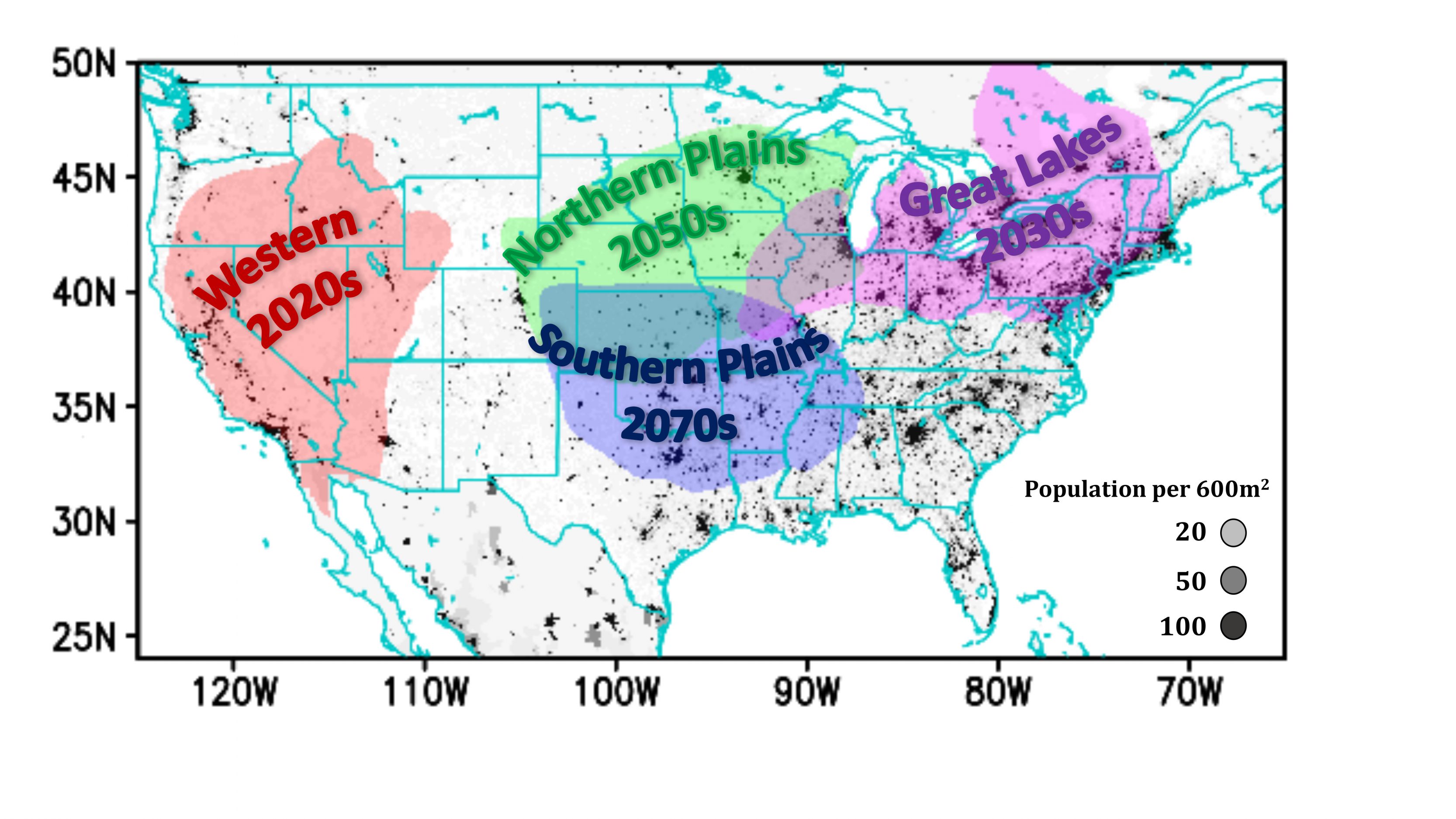Researchers Provide First Ever Analysis of U.S. Heat Wave Patterns Linked to Climate Change
A new analysis of heat wave patterns appearing in Nature Climate Change focuses on four regions of the United States where human-caused climate change will ultimately overtake natural variability as the main driver of heat waves. Climate change will drive more frequent and extreme summer heat waves in the Western United States by late 2020’s, the Great Lakes region by mid 2030’s, and in the northern and southern Plains by 2050’s and 2070’s, respectively.
“These are the years that climate change outweighs natural variability as the cause of heat waves in these regions,” said Hosmay Lopez, a meteorologist at NOAA’s Atlantic Oceanographic Meteorological Laboratory and the University of Miami’s Rosenstiel School Cooperative Institute for Marine and Atmospheric Studies and lead author of the study. “Without human influence, half of the extreme heat waves projected to occur in the future wouldn’t happen.”

Heat waves, which have been the leading cause of weather-related deaths in the United States for the last 30 years, have already increased in number and severity in recent decades. With growing populations in these regions, this study provides important information that can help inform adaptation and mitigation to protect human health.
Lopez and colleagues used climate models along with historical climate data from 1900-2010 to project future heat wave patterns across the U.S. during the summer months of June through August. They base their findings on the most extreme greenhouse gas concentration trajectory, known as RCP 8.5, or the “business as usual” scenario. Combining these future projections with population density, the research identified regions where human-caused climate change would surpass natural climate variability to become the dominant cause of heat extremes.
Regional climate variability, such as differences in atmospheric circulation and rainfall, will affect when climate change will become the primary driver of extreme heat events in these regions. For example, the later onset of climate change-fueled heat waves across the Great Plains is thought to be a result of a projected increase in a low-lying and fast-moving circulation of air over the region. The study is part of a larger effort to better predict heat waves. Understanding the driving forces behind heat waves is crucial for informing public health security and extreme heat mitigation strategies. “Research has tended to focus on predicting extremes such as tornadoes or hurricanes when heat waves are actually causing many more weather-related deaths in our country,” said Lopez. “We want to help fill that gap and develop effective heat wave prediction to help communities be better prepared.”
Originally Published March 2018 by Sierra Sarkis
